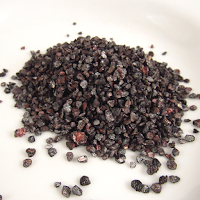

1. Old Bourbon Whiskey: Neutral Spirits, four gallons; refined sugar, three pounds; dissolved in water, three quarts; decoction of tea, one pint; three drops of oil of wintergreen, dissolved in one ounce of alcohol; color with tincture of cochineal, two ounces; burnt sugar, three ounces.
Comment: My father, a dentist, when called late at night by a patient suffering from a toothache would suggest swabbing it with oil of wintergreen and arrange to meet the sufferer in the morning.


3. Oronoko Rye: Neutral spirits, four gallons; refined sugar, three and a half pounds, dissolved in water to dissolve three pints; decoction of tea, one pint; burnt sugar, four ounces; oil of pear, half an ounce, dissolved in an ounce of alcohol.

4. Tuscaloosa Whiskey: Neutral spirits, four pints; honey three pints, dissolved in water, three pints; solution of starch, five pints; oil of wintergreen, four drops dissolved in half an ounce of acetic ether; color with four ounces burnt sugar.

Michael Veach of the Filson Historical Society and America's reigning expert on bourbon history has explained why it is important to parse these recipes. First, they tell us what ingredients were among those being used to concoct cheap alcoholic beverages. Second, they validate the complaint by legitimate distillers against shysters clothing themselves in the garment of “rectifiers,” that is, blenders of whiskey.

Of Lacour himself, information is scant. Little is known of his personal life. His date of birth has been given as “about 1800.” He called himself “of Bordeaux,” leading to the assumption that he had been a resident of that city before emigrating to the United States. Lacour’s arrival year and place is given as 1848 and New Orleans. Those few details are from a 1992 book entitled “The Foreign French: Nineteenth-Century French Immigration into Louisiana,” by Carl A. Brasseaux.
Upon his arrival, Lacour reputedly opened a saloon in the New Orleans’ French Quarter. His venture into the liquor trade may have led him to scheming about how to make popular alcoholic drinks on the cheap. His book, cited earlier, was first published in 1853 and republished at least once in 1860. An 1861 New Orleans business directory listed a “Pierre Lacour” as a cotton trader, doing business in Cloutierville, Natchitoches, Louisiana. If this is our man, he may have been branching out into other enterprises. I can find no record of his death or place of interment.
Lacour went on to write at least two more books that may now be lost, including “Lacour’s Chemical Analysis” and “Lacour’s Chemical Manipulations.” He also claimed to have set up a laboratory in Jefferson Parish, contiguous to New Orleans, for the manufacture of “Lacour’s Essential Oils” — essential that is for turning raw alcohol into any number of faux liquors.
In contemplating the history of American whiskey before Prohibition, Lacour’s story is instructive. Although my research indicates that many of “rectifiers,” blenders of whiskey, played it straight, enough examples of those who cheated have come to light to indicate that Lacour had his disciples. The Kentucky straight bourbon distillers who pressed the government to have all blended whiskeys designated as “artificial” were not just self-serving. National Prohibition, while ill-considered and devastating, had one positive effect: It eliminated the Lacours of the liquor trade.
Note: While drawn from a variety of sources, this post was made possible by Mike Veach in his 2013 book “Kentucky Bourbon Whiskey: An American Heritage.” There he reprinted the four Lacour whiskey recipes, not available from Internet sources.

No comments:
Post a Comment